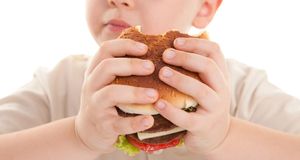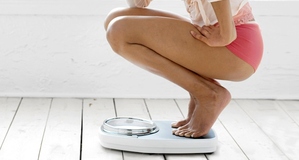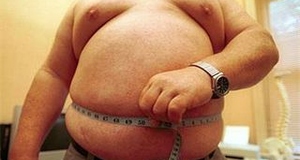Weight Bias and Anti-Fat Attitudes: Sources, Impacts, and Prevention MethodsCollege AdmissionsOverweight and obese individuals can be in disadvantage situations due to their body size. Evidence suggests that overweight and obese individuals can be at a disadvantage when applying for admittance to college. Canning and Mayer (1966) identified obese students to be less likely to be accepted to university when compared to their non-obese peers. Swami and Monk (2012) noted in a hypothetical university admissions scenario when participants were asked to select female candidates for admission, obese candidates were the least likely to be selected. Later analyses of the Attitudes Toward Obese Persons Scale, Beliefs About Obese Persons Scale, and the Short-Form Fat Phobia Scale was completed to discover the negative attitudes that the participants experienced towards the obese candidates. Weight bias has been noted to occur at not only the undergraduate university admissions level, but also the graduate level. Burmeister, Kiefner, Carels, and Musher-Eizenman (2012) studied the occurrence of weight bias within a large university graduate psychology program, specifically whether Body Mass Index was related to the quality of the letter of recommendation used for admission. The results indicated that individuals with higher Body Mass Indexes were correlated to fewer requested admissions interviews. There was no correlation between higher Body Mass Indexes among applicants and quality of the letter of recommendation. Workplace SettingsIn situations regarding hiring processes, employers will often act upon stereotypes of overweight and obese individuals, which will influence their final decision (Pingitore, Dugoni, Tindale, & Spring, 1994). Rothblum, Brand, Miller, and Oetjen (1990) studied the occurrence of employment discrimination among obese and very obese individuals and compared the experience to non-obese individuals. Throughout the course of the study, the very obese individuals reported more occurrences of weight bias in the workplace setting than the other individuals. The very obese individuals, particularly the women, expressed that they felt the need to try and conceal their weight and they experienced lower levels of self-confidence than obese and non-obese individuals.Rudolph, Wells, Weller, and Baltes (2008) completed a meta-analysis of studies regarding weight bias in workplace settings. Past studies have indicated that body weight can have an influence on individuals’ chance of being hired and receiving a performance appraisal. The focused studies were all related in the sense of revealing a common theme, which included overweight individuals, when compared to non-overweight individuals, being at a disadvantaged position for hiring procedures. However, the researchers noted that there was no known correlation between weight bias experience and position held. In other words, there was no relationship of weight bias and an overweight individual in a managerial position versus an overweight individual in a sales position. Effects of Weight BiasPsychological EffectsNon-obese individuals often have difficulties with understanding an obese individual’s experience with weight bias. A common consequence of weight bias among overweight and obese individuals is depression. Puhl and Heuer (2009) have identified weight-based teasing to be a mediator in depression among overweight and obese individuals. This occurrence has been observed in clinical and nonclinical settings. The experience of weight stigmatization was independently contributed to the variance of depression scores (Puhl & Heuer, 2009). The occurrence of weight stigmatization in childhood or adolescence was found to be related to later depressive symptoms (Annis, Cash, & Hrabosky, 2004). Another common consequence of weight bias experience among overweight and obese individuals includes body dissatisfaction and poor body image. Puhl and Heuer (2009) observed that the occurrence of body dissatisfaction due to weight bias experience was not exclusive to only women or men, but both groups. However, research findings regarding weight teasing in childhood was seen as a significant predictor for future body dissatisfaction among women not men (Grilo & Masheb, 2005). The occurrence of body dissatisfaction has been observed in clinical and nonclinical settings. Puhl and Heuer (2009) noticed that individuals who experienced higher levels of body dissatisfaction were sometimes associated with antifat attitudes. However, further study is needed in order to study this phenomenon for possible correlations between body dissatisfaction and prevalent antifat attitudes. Physical EffectsOverweight and obese individuals may undergo physical changes due to the experience of weight bias. One of such physical changes includes changes in eating behaviors. These changes in eating behaviors can include binge eating behaviors. Puhl, Moss-Racusin, and Schwartz (2007) found that individuals who internalized negative stereotypes based upon their weight reported more binge-eating occurrences when compared to individuals who did not internalize the stereotypes. Resulting actions from such occurrences did not include weight loss attempts or strategies (Puhl, Moss-Racusin, & Schwartz, 2007). These findings have been found to be consistent in clinical and nonclinical settings (Puhl & Heuer, 2009). However, changes in eating behaviors can also include exhibiting eating disorder-like symptoms. Jackson, Grilo, and Masheb (2002) noted an association between individuals with a history of weight or appearance-based teasing and eating disorder symptoms. Individuals with bulimia nervosa reported a higher frequency of weight and appearance-based teasing than individuals with binge eating disorder. However, the researchers found that weight-based teasing was unrelated to most eating disorder features in both groups. Overweight and obese individuals have been found to experience changes in physical activity when weight bias has been experienced. Such changes in physical activity can include engaging in less or more physical activity. The experience of weight bias can also affect exercise motivation (Puhl & Heuer, 2009). Storch, Milsom, and DeBraganza (2007) observed obese and overweight children whom experienced weight bias reduced, or avoided, engaging in physical activity. The available research focusing on adults and changes in physical activity resulting from weight bias is limited. Further research is needed in order to address the association regarding weight bias experience and exercise behaviors. Weight Bias Reduction MethodsEducationWeight bias can stem from sources believed to have the ability to suspend judgment, such as health care settings and the workplace. This can result in detrimental, and potentially lasting, physical or psychological effects for the affected individual. Such impacts from supposed trustworthy sources have revealed the importance of proper education regarding obesity. Education is a critical tool for weight bias reduction because of its ability to enlighten not only the source of weight bias, but also overweight and obese individuals. Chambliss, Finley, and Blair (2004) noticed that the studied exercise science students who engaged in weight biases was likely due to exposure to societal messages emphasizing negative perceptions of overweight and obese individuals. The researchers also observed that weight bias awareness is not a typical component of health and fitness training among college programs. Education regarding obesity, obesity etiologies, the difficulties of weight loss, and the inaccuracy of weight-based stereotypes are crucial because it will allow for a greater sense of understanding of overweight and obese individuals (Puhl, Moss-Racusin, Schwartz, & Brownell, 2008). A greater sense of understanding of overweight and obese individuals provided through educational measures can allow for individuals to feel sensitive towards overweight and obese individuals (Puhl, Moss-Racusin, Schwartz, & Brownell, 2008). Targeted InterventionsPuhl, Moss-Racusin, Schwartz, and Brownell (2008) conducted a study regarding the types of weight bias reduction measures that overweight and obese individuals would find most effective. One-third of the interviewed individuals suggested a public intervention to be effective at increasing understanding of obese individuals, increasing sensitivity towards obese individuals, and ultimately reducing weight bias. One of the main suggested interventions included targeting media outlets. These interventions would include increasing exposure to plus-sized models in advertisements and discouraging the open ridicule of certain characters’ or actors’ weight on television shows or in movies. The idea is that by engaging in these types of public interventions, the emphasis on thinness will not be as prominent as it is currently and acceptance of all body types will be allowed to occur.Continued on Next Page » Suggested Reading from Inquiries Journal
Inquiries Journal provides undergraduate and graduate students around the world a platform for the wide dissemination of academic work over a range of core disciplines. Representing the work of students from hundreds of institutions around the globe, Inquiries Journal's large database of academic articles is completely free. Learn more | Blog | Submit Latest in Psychology |


















